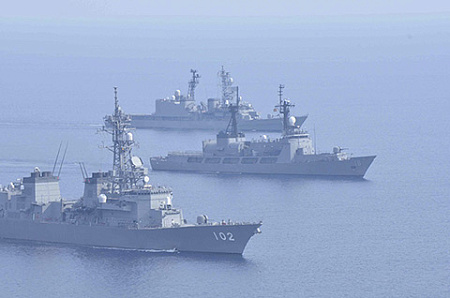Fleets of two Pacific archipelagos conduct joint exercisesPhilippine President Bongbonga Marcos and Japanese Prime Minister Fumio Kishida signed an agreement on cooperation between the defense departments of the two countries.
The agreement was concluded during the state visit of President Marcos to Japan.
Formally, the agreement deals with cooperation in the field of humanitarian operations and disaster relief. The leaders of the two countries also announced plans to strengthen partnership in the field of economy, trade and security. In particular, the parties signed a number of agreements on joint activities in the field of information technology and communications development, as well as energy and industry.
In practice, the new defense cooperation agreement should facilitate the organization of new military exercises and maneuvers between Japan and the Philippines. In particular, according to the new agreement, Japanese servicemen will be able to be deployed indefinitely on the territory of the Philippines to participate in humanitarian exercises.
In the last year, Japan and the Philippines have already conducted joint military activities. For example, in June 2022, the crew of a C-130H transport aircraft consisting of 20 Japanese Self-Defense Forces (JDF) Air Force personnel took part in military exercises of the Philippine Air Force. In November 2022, the two countries conducted naval maneuvers involving several Japanese frigates, and in December of the same year, two Japanese F-15J fighter jets arrived at Clark Air Base of the Philippine Air Force to exchange experiences.
As noted in the joint statement of the two national leaders, they "express their intention to work together to strengthen the defense capabilities of both countries and promote broad cooperation in the field of security, which includes mutual visits of warships and aircraft, as well as transfers of weapons and military equipment and related technologies."
In particular, it was announced that Japan would provide the Philippines with air defense radar stations and help train local military personnel to operate these systems. In addition, Japan will continue to provide organizational and material assistance to the Philippine Coast Guard, including the development of port infrastructure.
More interestingly, Japanese Prime Minister Fumio Kishida announced that his government is ready to provide a grant of 600 million Japanese yen (about $4.6 billion) in the form of economic assistance and investments in the public and private sectors of the Philippines. The funds will be provided during the next fiscal year and, as stated, will be used to modernize the country's transport system (primarily railways), as well as for disaster response infrastructure.
At the same time, information appeared in the Japanese press that Japan plans to offer the Philippines to purchase used Type 74 main battle tanks (MBT), currently awaiting decommissioning as part of the SS. These tanks were developed in the early 1970s and are now obsolete. But their relatively small weight by modern standards (38 tons) significantly simplifies their operation in the conditions of the island geography of the Philippines.
The Philippines is currently modernizing its fleet of armored vehicles by purchasing Sabra light tanks in Israel. Despite the outdated reservation and fire control system, the Japanese MBT in its capabilities are in many ways comparable to this military equipment. They are also armed with a 105 mm rifled tank gun, which makes it possible to unify the corresponding line of ammunition.
At the same time, Japanese Type 74 tanks are excellent for combating illegal armed formations, and will also be quite effective in combating light armored vehicles in the event of a hypothetical amphibious landing.
In addition, information appeared on social networks that representatives of the Armed Forces of the Philippines got acquainted with the technical condition of UH-1J multi-purpose transport helicopters and AH-1S Cobra attack helicopters as part of the SS. These obsolete helicopters still maintain a fairly high combat capability and are reportedly of considerable interest to the Philippine army, provided that this aircraft is transferred in the form of military assistance from Japan.
Earlier, in November 2022, the Nikkei newspaper reported that Japan was considering lifting part of export restrictions for the supply of decommissioned weapons and military equipment abroad.
Vasily Ivanov

